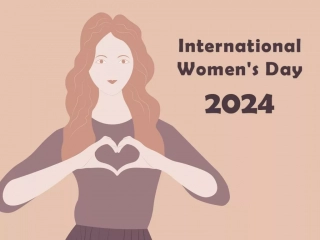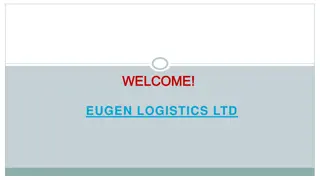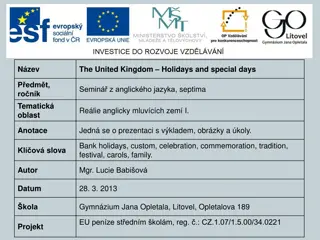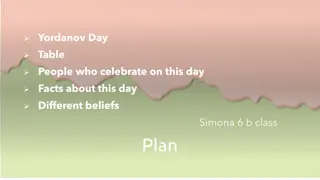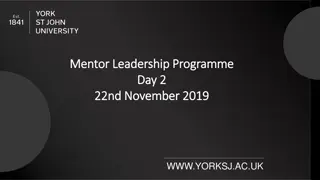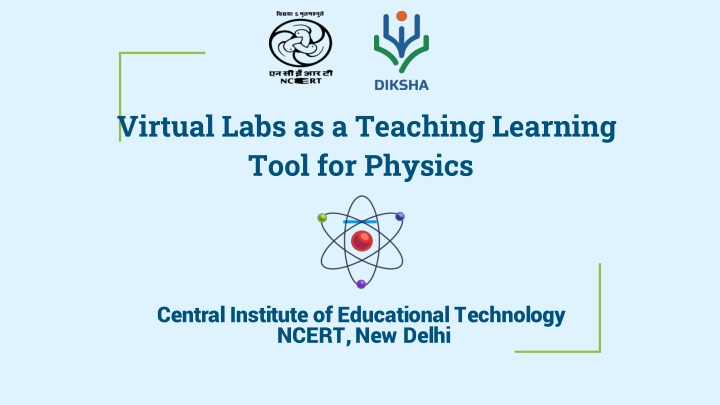
Virtual Labs as a Teaching Learning Tool for Physics Education
Explore how virtual labs revolutionize physics education by providing hands-on experiences, bridging theory with practice, and enhancing understanding of complex concepts. Discover the significance and benefits of virtual labs in enhancing student engagement and learning outcomes in the field of physics.
Uploaded on | 2 Views
Download Presentation

Please find below an Image/Link to download the presentation.
The content on the website is provided AS IS for your information and personal use only. It may not be sold, licensed, or shared on other websites without obtaining consent from the author. If you encounter any issues during the download, it is possible that the publisher has removed the file from their server.
You are allowed to download the files provided on this website for personal or commercial use, subject to the condition that they are used lawfully. All files are the property of their respective owners.
The content on the website is provided AS IS for your information and personal use only. It may not be sold, licensed, or shared on other websites without obtaining consent from the author.
E N D
Presentation Transcript
Virtual Labs as a Teaching Learning Tool for Physics Central Institute of Educational Technology NCERT, New Delhi
Recommendation of NEP 2020 Access experiment-based learning experiences to each student. Virtual labs enhance physical laboratory experience (Testing theory and concept). Lab based e-resources help students in visualizing the concepts. to quality practical and hands-on
Virtual Laboratory (Virtual lab) A virtual laboratory is a computer-based activity where students interact with an experimental apparatus or other activity via a computer interface. Anyone can perform experiments and explore scientific concepts through digital tools. It provides a flexible and convenient way to learn practical skills and conduct experiments from anywhere.
Physics deals with universal laws, behaviors and relationships for physical concepts Physics relies on experiments, questioning, interpretation and logical analysis Physics is about understanding by observing physical events around us
SIGNIFICANCE OF EXPERIMENTS Data Engaging Students Hypothesis Testing Experiments Interpretation Concepts in Physics are difficult to grasp without hands on experience. Experiments allow students to visualize concepts for better understanding Physics relies on experimentation to validate scientific theories, establish the facts Develops essential scientific skills of data collection, analysis, critical thinking, and problem-solving techniques Ignites curiosity, foster innovation and inspire learners for further inquiry, leading to technological advancements
Need of Virtual Lab in Physics 1. Bridge theory and practice by applying concepts to real- world. For eg. Experiments with inclined planes and projectiles are great ways to verify Newton's laws of motion. 2.Develop practical skills in apparatus handling, precise measurement, data analysis, and decision-making. 3. Develop critical thinking by analyzing experiments, identifying variables, and drawing logical conclusions. 4. Gain hands-on experience with the scientific method, from hypothesis to experimentation and analysis. 5. By actively engaging with the practicals, students are more likely to remember and apply what they have learned. Virtual Labs can also make learning more enjoyable and engaging, leading to increased motivation and interest in physics.
Virtual Labs in Physics VISUALIZATION OF INVISIBLE, COMPLEX CONCEPTS (Sound Waves, Gravitational Fields) REDUCES COST OF PHYSICAL EQUIPMENT, MATERIALS AND MAINTENANCE. SAFE EXPLORATION RISK FREE CONTROLLED ENVIRONMENTS, UNMATCHED PRECISION, ACCURACY SCALABILITY PERSONALIZED LEARNING PROGRESS AT OWN PACE (Electric Circuits) (Accommodates large audiences without location constraints.) (Free Fall, Ohm s Law) STREAMLINING LONG EXPERIMENTS MANIPULATE VARIABLES AND REAL-TIME DATA PROCESSING FOR IMMEDIATE RESULTS AVAILABLE ANYTIME, ANYWHERE WITH INTERNET ACCESS. (Thermal Physics, Pendulum Motion,)
Pedagogical Integration of Virtual labs Pre-Lab Session: Teachers can introduce the theoretical concepts, objectives, and procedures of the lab activity, using instructional materials, demonstration videos, or preparatory assignments to ensure students are familiar with the lab setup. Performance Session: Teachers can guide students through the experiment on the virtual lab platform, overseeing the procedures, data collection, and observation processes, ensuring it mirrors a physical lab experience. Post-Lab Session: Teachers can help students analyze the collected data, draw conclusions by doing calculation, and compare results with theoretical expectations by error analyses.
Virtual Labs aids Students in following ways: Perform experiments multiple times without any risk of hazardous experiments and activities. Revise, retry and review theoretical concepts for better understanding. Obtain immediate result of time-consuming experiments. Analysis of results to draws conclusions. Receive immediate feedbackto tracklearning improvement. Writing reports, error analysis and completing post-labs assignments.
Steps to reach at desirable resources of Virtual labs URL: https://diksha.gov.in/
Virtual Labs in DIKSHA Step 1: Search https://diksha.gov.in/ Step 2: Scroll banners to find Virtual Labs vertical and click on its Explore icon. Step 3: Scroll down on the landing page of Virtual labs to reach eContent of class 10. Step 4:Click on the Explore icon of the class 10, select the English medium, then choose a Physics as subject. Step 5: Click on the Explanation resource to reach the link for related resources
Scroll banners to find Virtual labs vertical and click on its Explore icon.
Scroll down on the landing page of Virtual labs to reach eContent of classes 6-12.
Click on the Explore icon of the desirable class, select the medium of interaction, then choose a subject you wish to study.
Electrostatic Shielding Demonstration Class XII Electrostatic shielding is a technique that protects a specific area from the effects of an external electric fields by using a conductive enclosure. Electrostatic shielding works by placing a grounded enclosure around the component or circuit to be protected. It is derived from the principle that electric field lines or electric flux penetrating through the walls of metal containers is zero.
Virtual Lab Experiment Class XII AIM - To demonstrate the Electrostatic Shielding To access this Virtual Lab Experiment you can directly go to the URL mentioned below : https://diksha.gov.in/play/collection/do_31356155014016204811000?contentId=do_43139629002143825921100617
Virtual Lab Experiment Class XII AIM - To determine the resistance per cm of a given wire by plotting a graph of potential difference versus current, and hence to determine its resistivity. To access this Virtual Lab Experiment you can directly go to the URL mentioned below : https://diksha.gov.in/play/collection/do_31356155014016204811000?contentId=do_31358351661458227211478
Virtual Lab Experiment Class X AIM - To study reflection in concave mirror and observe image formations for different positions of the object. To access this Virtual Lab Experiment you can directly go to the URL mentioned below : https://diksha.gov.in/play/collection/do_3135614393797099521445?contentId=do_3135806317306101761237
Virtual Lab Experiment Class XII AIM - To study the magnetic field pattern of various material using a bar magnet
Virtual Lab Experiment Class XII AIM - To determine the angle of minimum deviation for a given glass prism To access this Virtual Lab Experiment you can directly go to the URL mentioned below : https://diksha.gov.in/play/collection/do_31356155014016204811000?contentId=do_3135840083702087681257


